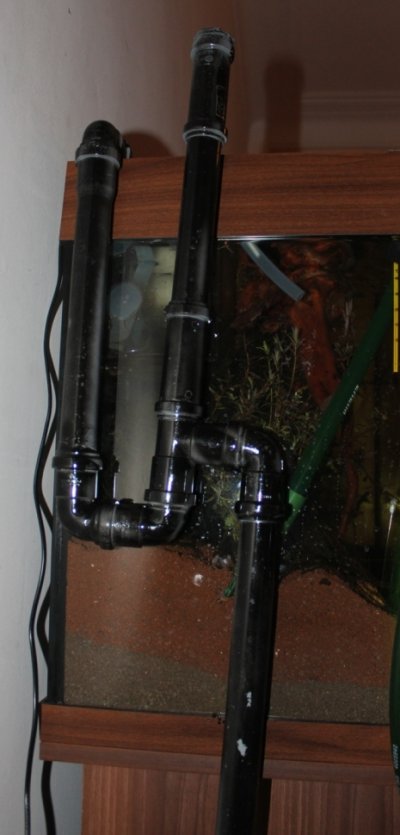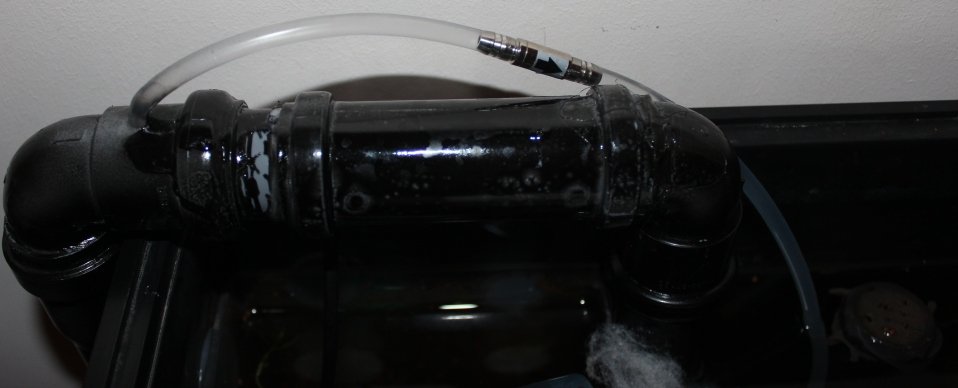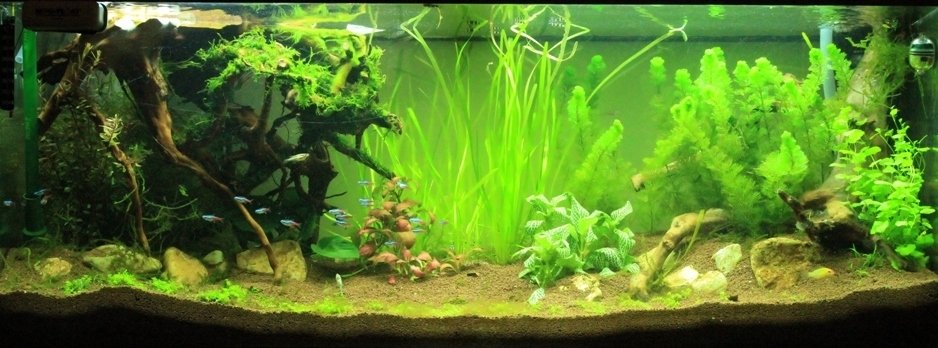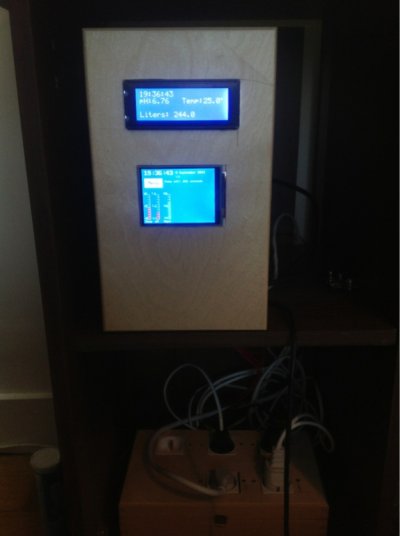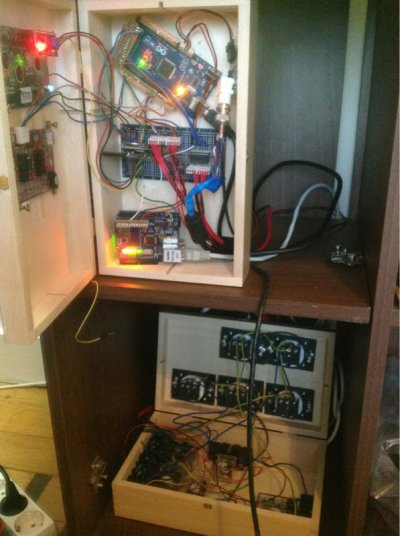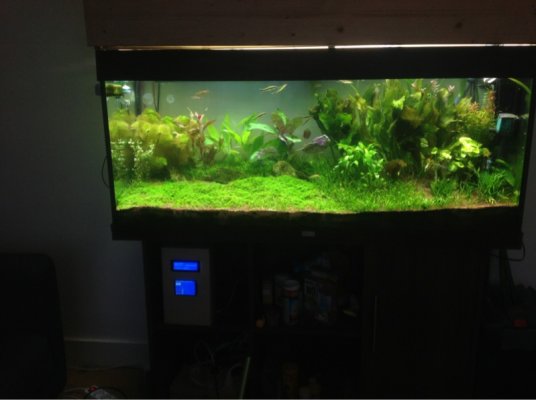Hi all,
New to this forum, any aquarium forum in fact.
Being a sailor I was stupid enough to get myself a Juwel Rio 240. The problem is that I’m away from home about 30 days at a time, and sometimes my girlfriend is away for work also, so the aquarium will be left alone for several weeks at a time. First thought is to sell the **** thing again and forget that it ever existed, but why not try to make it completely self-maintained?
I have lots of experience keeping and maintaining aquariums before I started sailing, but no experience with automated setups. I have an idea on how to do it, but before I get my hands dirty, I would like to hear some other ideas or inputs.
Here is my imaginary setup:
I live in Bruxelles, Belgium. As far as I know the tap water is not very suitable for aquariums, at least not for the fish I intend to keep, so a osmosis apparatus is needed. I want to store the osmosis water (about 30–40 liters) for about 2 days, while it is circulated and minerals are mixed back in. From there it will be pumped to the aquarium every 2 days or so. In the aquarium I will make an internal overflow in the left back corner, where the overflowing water will be pumped to the drain using 2 pumps triggered by 2 float switches. I want to keep the critical things double if possible, so that if one system fails the other will still work. I don’t dare to imagine pumping about 130 liters of water on my living room floor every week it is left unattended. Feeding and lights are easy to automate, so no problem there.
I'm attaching a plan I made for myself, while being bored at sea... Can't wait to get home again, and start this thing
Anyway, you guys can have a look at my plan below. Comments are welcome.
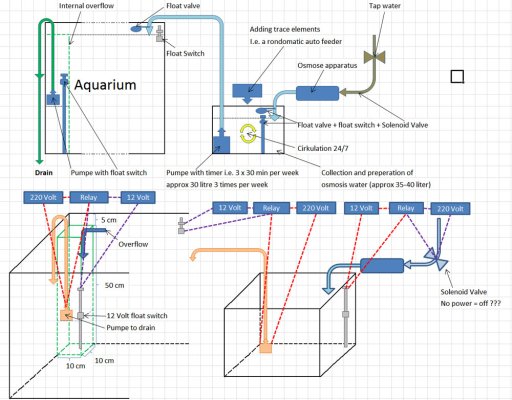
Now for the BIG problem. Wiring everything together. Here I'm asking (begging) for some help, as I have very limited experience with these things. I have (tried to) put a diagram together, showing how I imagine the wiring of all the electronics, but I have no idea if I am on the right track or completely wrong...
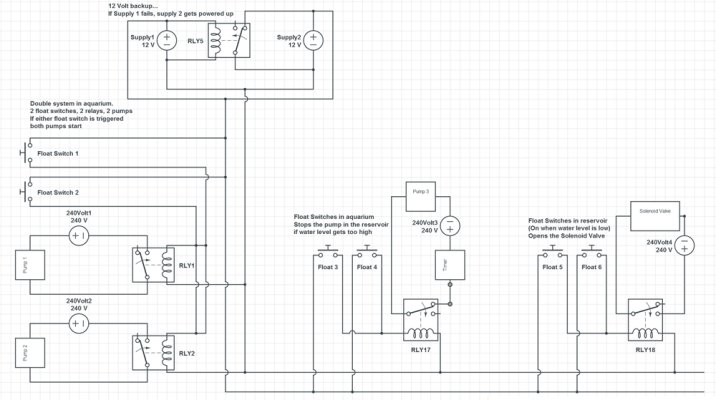
Do you guys think that this will work? Any ideas on how to improve or make it correctly?Any help is much appreciated.
Jakup
New to this forum, any aquarium forum in fact.
Being a sailor I was stupid enough to get myself a Juwel Rio 240. The problem is that I’m away from home about 30 days at a time, and sometimes my girlfriend is away for work also, so the aquarium will be left alone for several weeks at a time. First thought is to sell the **** thing again and forget that it ever existed, but why not try to make it completely self-maintained?
I have lots of experience keeping and maintaining aquariums before I started sailing, but no experience with automated setups. I have an idea on how to do it, but before I get my hands dirty, I would like to hear some other ideas or inputs.
Here is my imaginary setup:
I live in Bruxelles, Belgium. As far as I know the tap water is not very suitable for aquariums, at least not for the fish I intend to keep, so a osmosis apparatus is needed. I want to store the osmosis water (about 30–40 liters) for about 2 days, while it is circulated and minerals are mixed back in. From there it will be pumped to the aquarium every 2 days or so. In the aquarium I will make an internal overflow in the left back corner, where the overflowing water will be pumped to the drain using 2 pumps triggered by 2 float switches. I want to keep the critical things double if possible, so that if one system fails the other will still work. I don’t dare to imagine pumping about 130 liters of water on my living room floor every week it is left unattended. Feeding and lights are easy to automate, so no problem there.
I'm attaching a plan I made for myself, while being bored at sea... Can't wait to get home again, and start this thing
Anyway, you guys can have a look at my plan below. Comments are welcome.

Now for the BIG problem. Wiring everything together. Here I'm asking (begging) for some help, as I have very limited experience with these things. I have (tried to) put a diagram together, showing how I imagine the wiring of all the electronics, but I have no idea if I am on the right track or completely wrong...

Do you guys think that this will work? Any ideas on how to improve or make it correctly?Any help is much appreciated.
Jakup


